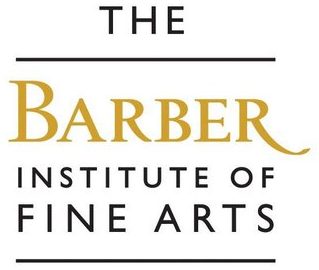Our Founders
The Barber Institute of Fine Arts owes its existence to the vision of Lady Martha Constance Hattie Barber (1869–1933) — pictured (right) in a portrait by James Jebusa Shannon [1912].
Lady Barber was the daughter of a wealthy Worcestershire businessman, Simon Onions, who, after an education at Cheltenham Ladies College married the Birmingham solicitor and property developer, William Henry Barber (always known by his second name). Henry proved a highly successful developer, making his fortune in the expanding suburbs of Birmingham and by his mid thirties he and Lady Barber were able to retire to Culham Court, an 18th-century estate in Oxfordshire. However, the couple maintained a close contact with Birmingham, Henry was an original subscriber to the endowment fund set up by Joseph Chamberlain to establish the University of Birmingham, and he went on to endow chairs of Law and Jurisprudence, eventually becoming a Life Governor. In 1924 Henry received a baronetcy “for political services to Birmingham” and he died three years later.
Before his death, Sir Henry and Lady Barber had discussed establishing a permanent contribution to Henry’s home city, and Lady Barber ensured that this idea came to fruition, founding the Barber Institute in 1932. She died, childless, four months later, leaving the entire Barber fortune to the Trustees of the Institute to enable the construction of a new building, the development of the art collection and the funding of public concerts.
Our Building
The Barber Institute of Fine Arts is housed in one of Birmingham's finest Art Deco buildings, purpose built and opened by Queen Mary in 1939.
The Barber Institute was designed by Robert Atkinson (1883-1952), one of Britain's leading architects of the 1920s and ’30s. When it opened The Times described the building as 'the purest example of his work' and it continues to be regarded as one of his greatest achievements.
In 1946 the building received a bronze medal from the Royal Institute of British Architects and in 1981 was listed Grade II by the Department of the Environment - updated to a Grade 1 listing by Historic England in 2020.
The design of the building came as a result of a close collaboration between Atkinson and the Barber's first Director, Professor Thomas Bodkin, and was influenced by new galleries built at the Fitzwilliam Museum, Cambridge, the Boijmans Museum, Rotterdam and the Gemeentemuseum at the Hague.
The building is laid out around the central music auditorium, surrounded by corridors. On the Ground floor these form offices and lecture halls for the Departments of Music and History of Art, as well as a dedicated Art History library. The galleries occupy the same space on the first floor, approached by a magnificent travertine staircase directly opposite the entrance.
Atkinson had originally planned for the addition of a courtyard and a substantial extension, but in 1965, the building of the Music Library changed these designs. In 1974 the Reserve Gallery was built on top of the Music Library to house works of art not currently on display, and finally between 1986-89, the metal and glass roof was added, along with a top-lit picture gallery.
Atkinson designed two further museum interiors, the Colman Galleries at the Castle Museum in Norwich, which opened in 1951, and the Graham Robertson and Students' Rooms at the Fitzwilliam Museum in Cambridge, which were completed posthumously in 1955.

